Warriors the latest NBA champions to raise the bar in ever-changing league

The Golden State Warriors owe a debt. They are beholden to Mike D'Antoni's Suns—which Steve Kerr and assistant coach Alvin Gentry helped to run and to coach—for the overarching style of their offense. They modeled the Spurs for their ball movement and flexibility. They came to embody the ideals of the pace-and-space Heat, a team that only unlocked its potential by going smaller and getting out of its own way. Their defense, built on the work of skilled, switchable players, is a natural extension of that which won the Mavericks a title.
Your 2014-15 NBA champions are very much the product of all that came before. Yet it can be said, still, that the Warriors are the first team of their kind to win the title—if only because these Warriors are such a distinct mix as to be the first team of their kind at all. Roots are only that. Golden State took concepts and strategies and grew them to their fullest potential, culminating in a team that was far more than the sum of its influences.
• MORE NBA: Iguodala wins MVP | LeBron makes history | Twitter roundup
This year's champions double as the avant garde. It's fitting, in a way, that Golden State won its Finals series against Shawn Marion—once an apositional anomaly for those revolutionary Suns teams—rendered obsolete on Cleveland's bench. The game keeps moving. It makes relics of the best players in the league, no matter how subversive their skill sets once seemed.
Andre and the Giant: How one veteran helped the Warriors turn the Finals
These days, that progress races at the speed of a Warriors fast break. The NBA Finals turned when Kerr and his staff saw an opportunity to run even smaller than usual at the expense of center Andrew Bogut. It was both a bold move and one very much in the Warriors' strategic character. It shouldn't be lost on us, though, that Golden State made a critical adjustment against a LeBron James team by taking its best rim protector out of the rotation entirely. The one defensive quality deemed essential to containing James ultimately proved negotiable. It was more important for the Warriors to be adaptable than to be conventionally formidable. There was no 7-foot stalwart ascending to contest every attempt at the rim. The balance of the defense was instead diffused among Andre Iguodala, Draymond Green, Harrison Barnes, Klay Thompson, and Shaun Livingston. Together they formed a ceaseless barrier; although Iguodala could be screened, a quick switch collapsed the driving and passing lanes, characteristic of a defense in exchange. So deeply in sync were the Warriors that they removed the most basic structural flaw of team defense.
This team was imagined and constructed in such a way that a player like Iguodala, who didn't start a game for the Warriors all season, could be named Finals MVP. Plenty of contenders built rosters united by a particular aim or style of play. Only Golden State was able to project a championship-worthy end goal while maintaining multiple logistical courses to get there.
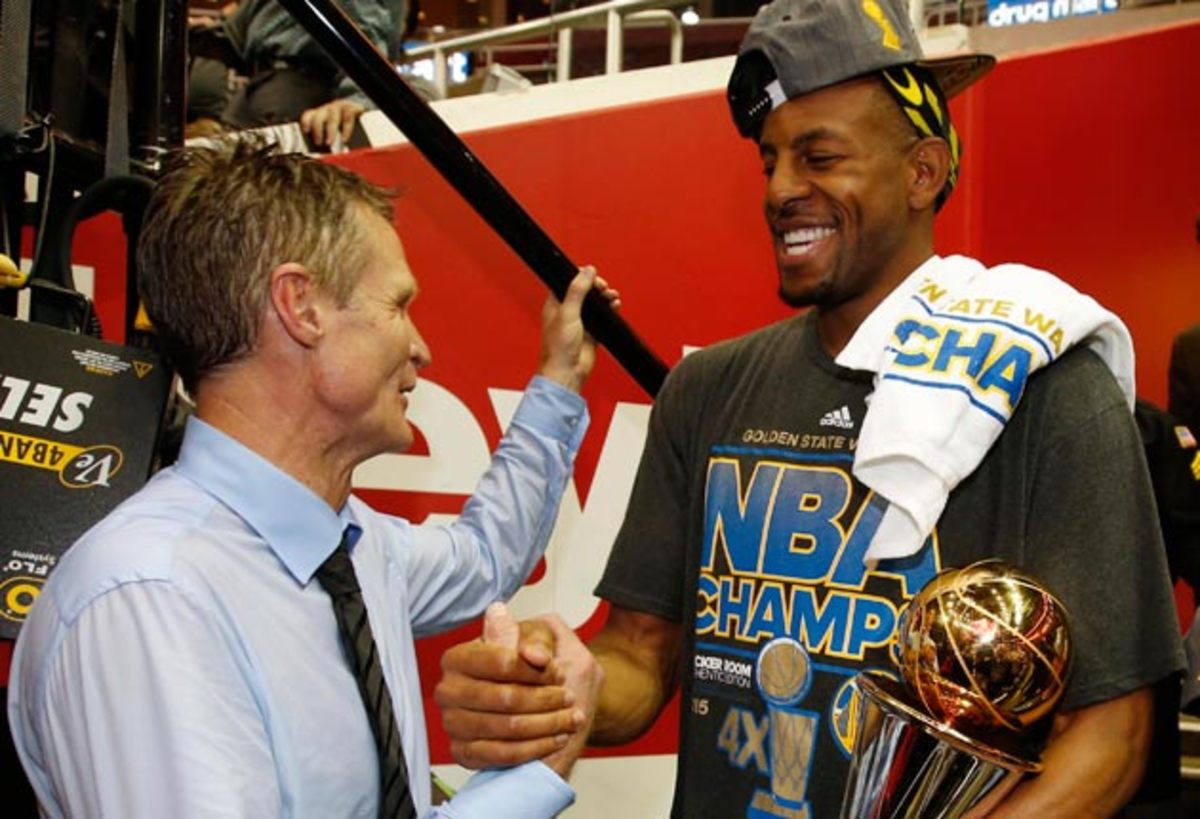
At various points in its postseason run, this team either relied heavily on Bogut or marginalized him completely; used Thompson as a distraction or an essential creator; switched up its rotation as to make Shaun Livingston something between a point guard, shooting guard, and small forward; went small by using Barnes as a primary post defender in one series and later by using Iguodala in the same capacity instead; relied on Curry and Green, as dictated by the coverage, to work as essential playmakers; and found important situational minutes for Festus Ezeli, Leandro Barbosa, and David Lee. Whenever the Warriors seemed trapped, they merely changed shape to resume a familiar dominance.
• MORE NBA: Warriors' title package: Commemorative book, framed cover
That, more than anything, was Golden State's most enduring quality. This was a jump-shooting team, a fast-breaking team, a team whose perimeter-dominant offense and masterfully pliable defense would never satisfy traditional standards. Yet the Warriors' entire season was a statement of authority by the best team in basketball irrelevant of style. After a regular season run of 67 wins forged by a historic point differential, the Warriors worked their way through the playoffs with just five total losses in four series. Not once did they face elimination. Golden State ebbed and flowed as all teams do, but offered proof of their greatness in how decisively they would regain control.
For the Warriors, that control was exercised and maintained in a fashion distinct from every other champion in NBA history. They borrowed. They riffed. They stole plays that worked. In doing so, they took grand concepts to great lengths and fulfilled their underlying promise. Behold, now, their golden composite: An undeniable marvel, now title-affirmed, on the crest of basketball's new wave.
GALLERY: Sports Illustrated's best NBA Finals photos from Game 6
Golden State Warriors Win The NBA Title

The Golden State Warriors won Game 6 of the NBA Finals 105-97 over the Cleveland Cavaliers to clinch the franchise's first NBA title since 1975.
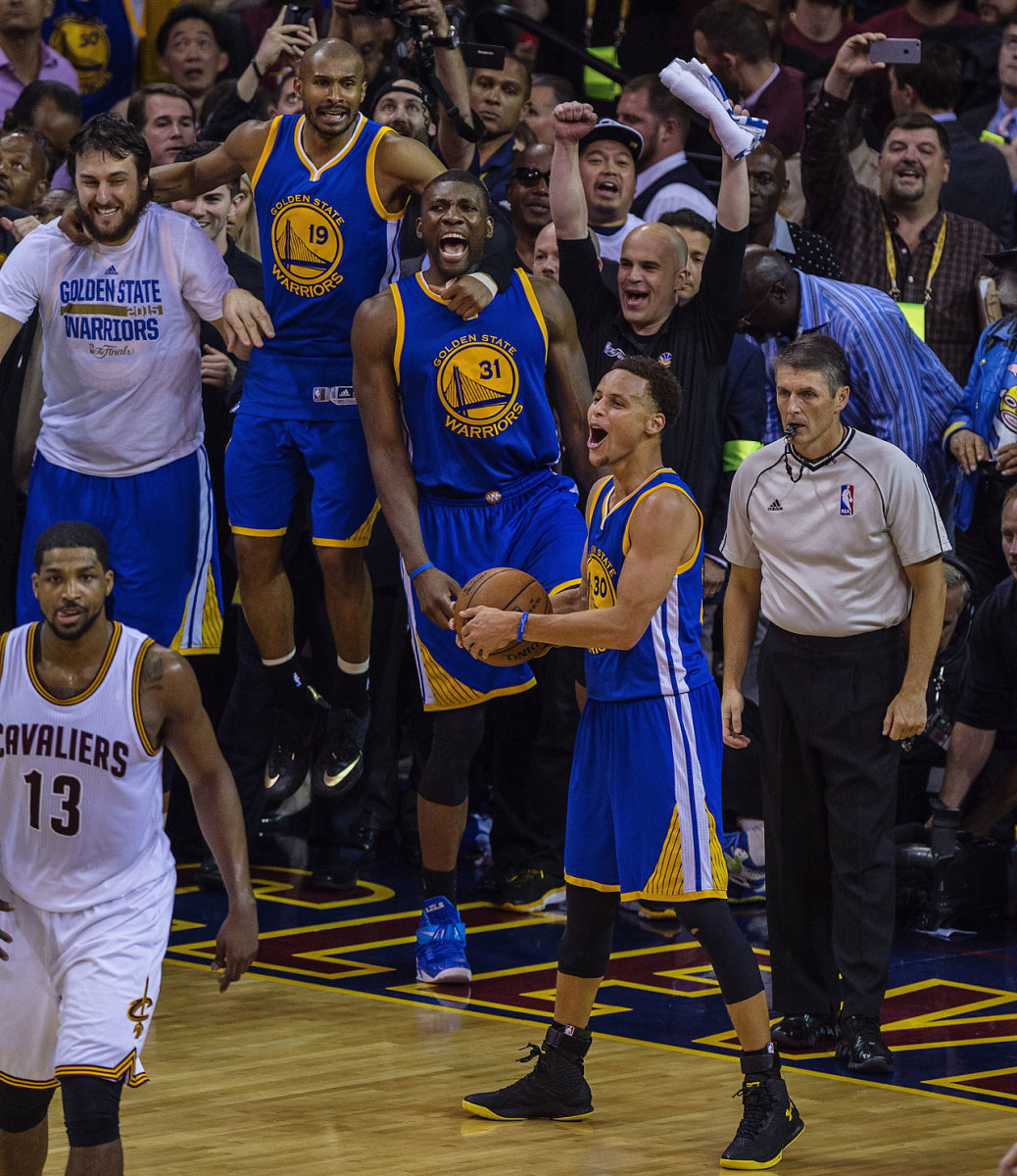
The Warriors are the third straight one-seed to win the title, following in footsteps of the San Antonio Spurs in 2014 and the Miami Heat in 2013.

Golden State trailed by two points early in the third quarter but quieted the crowd in Cleveland, which has seen the city's three pro teams go a combined 144 seasons without one of them winning a championship.

James was replaced in the final seconds, but before he left the court, the four-time MVP shook hands with Steph Curry and offered congratulations to coach Steve Kerr and the rest of the Warriors. (Text credit: AP)
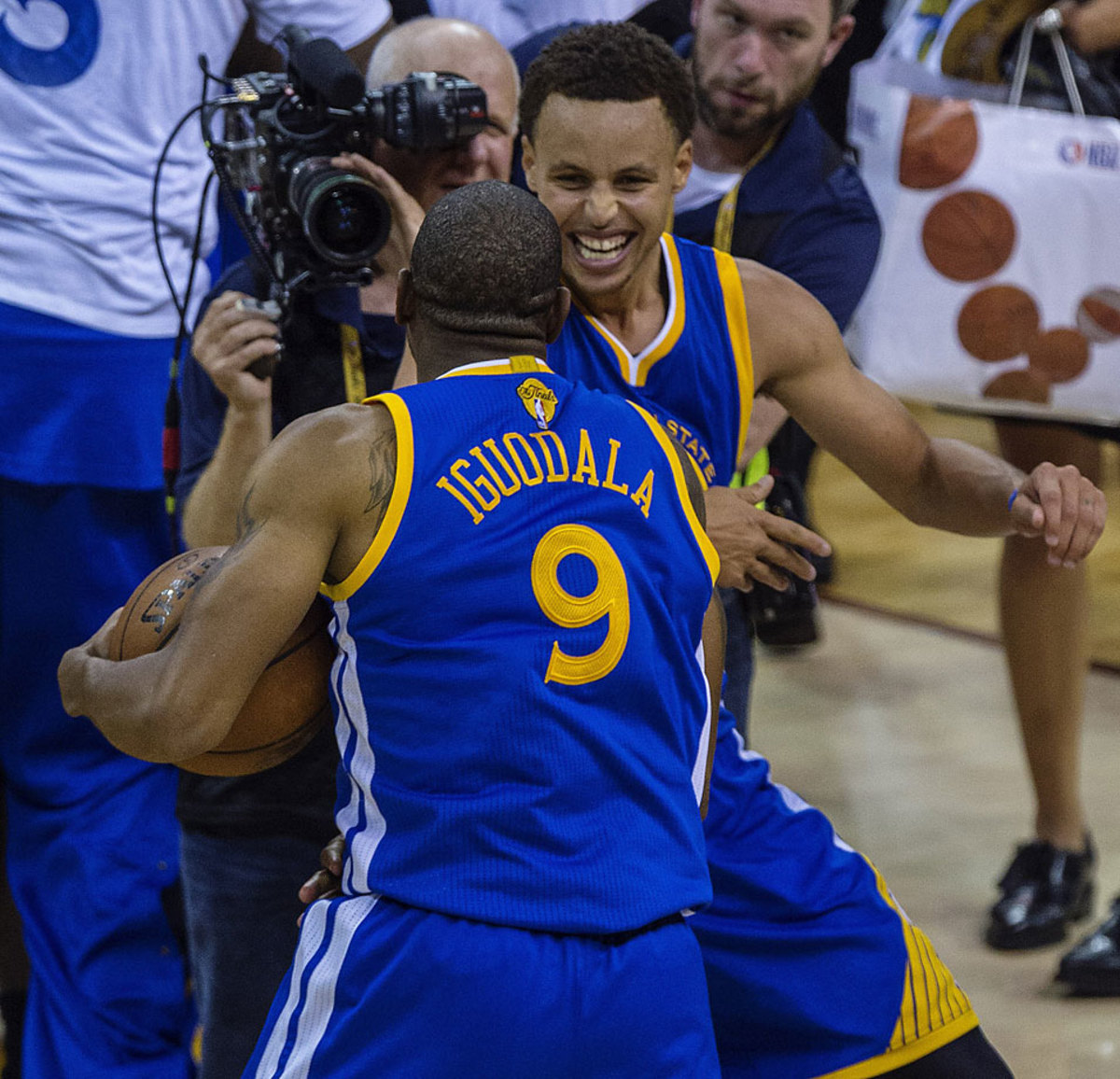
Andre Iguodala was named Finals MVP and celebrates here with regular season MVP Steph Curry.
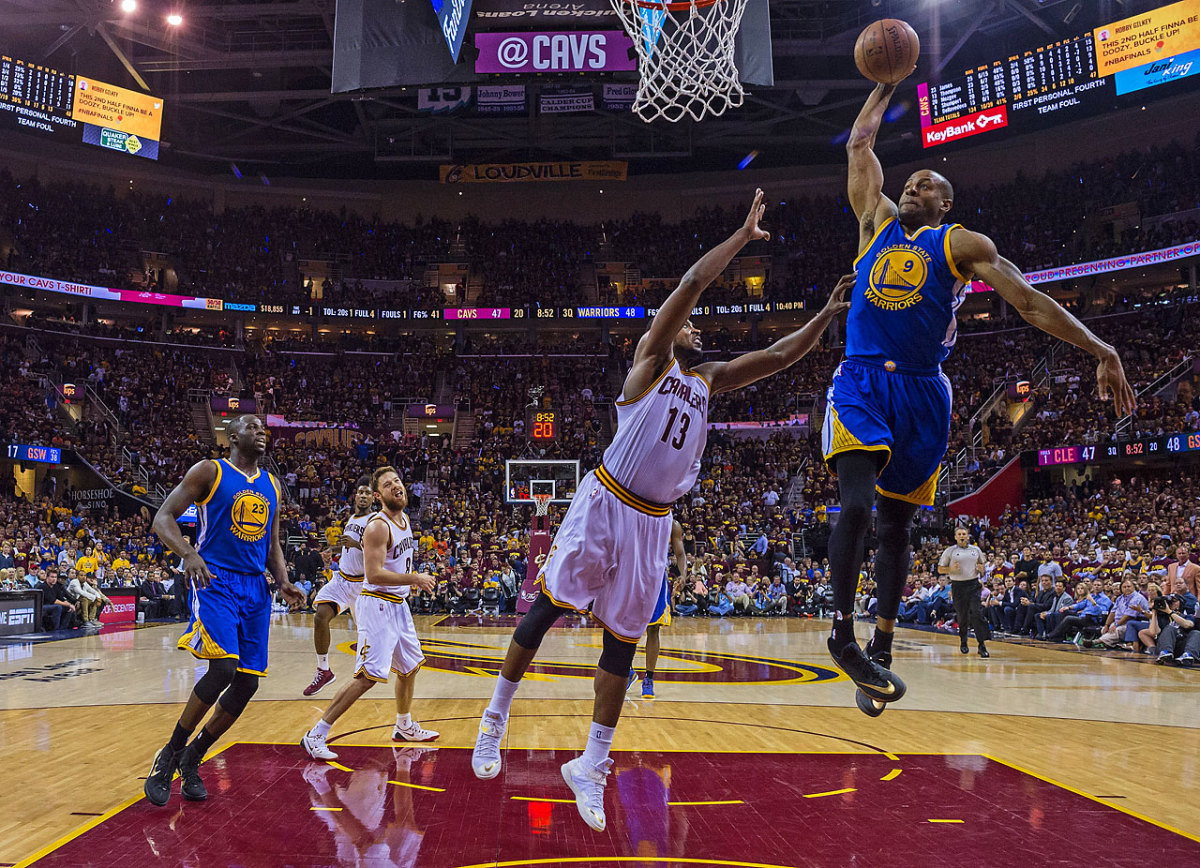
Inserted into the Warriors starting lineup for the first time all season in Game 4 of the NBA Finals, Andre Iguodala proved his worth by helping lead Golden State to three consecutive wins and the title. He scored 25 in Game 6.
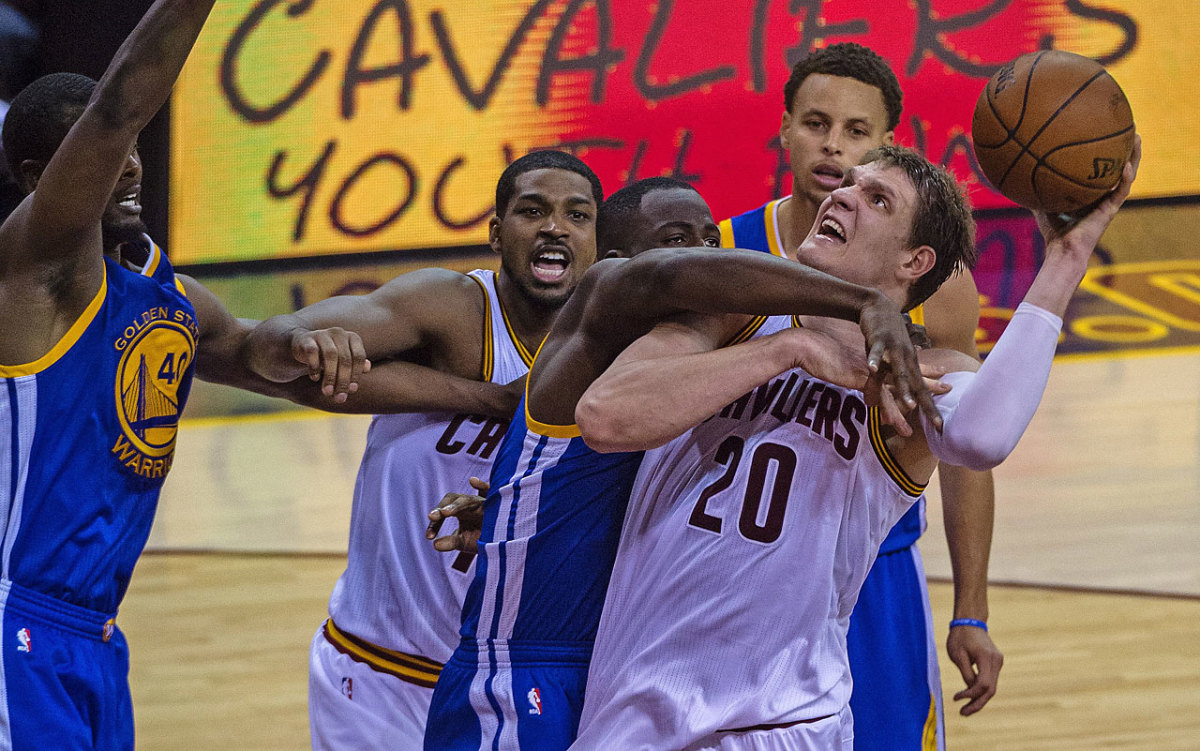
Draymond Green, pictured here holding down Timofey Mozgov, enjoyed a triple double in Game 6 -- 16 points, 11 rebounds and 10 assists.
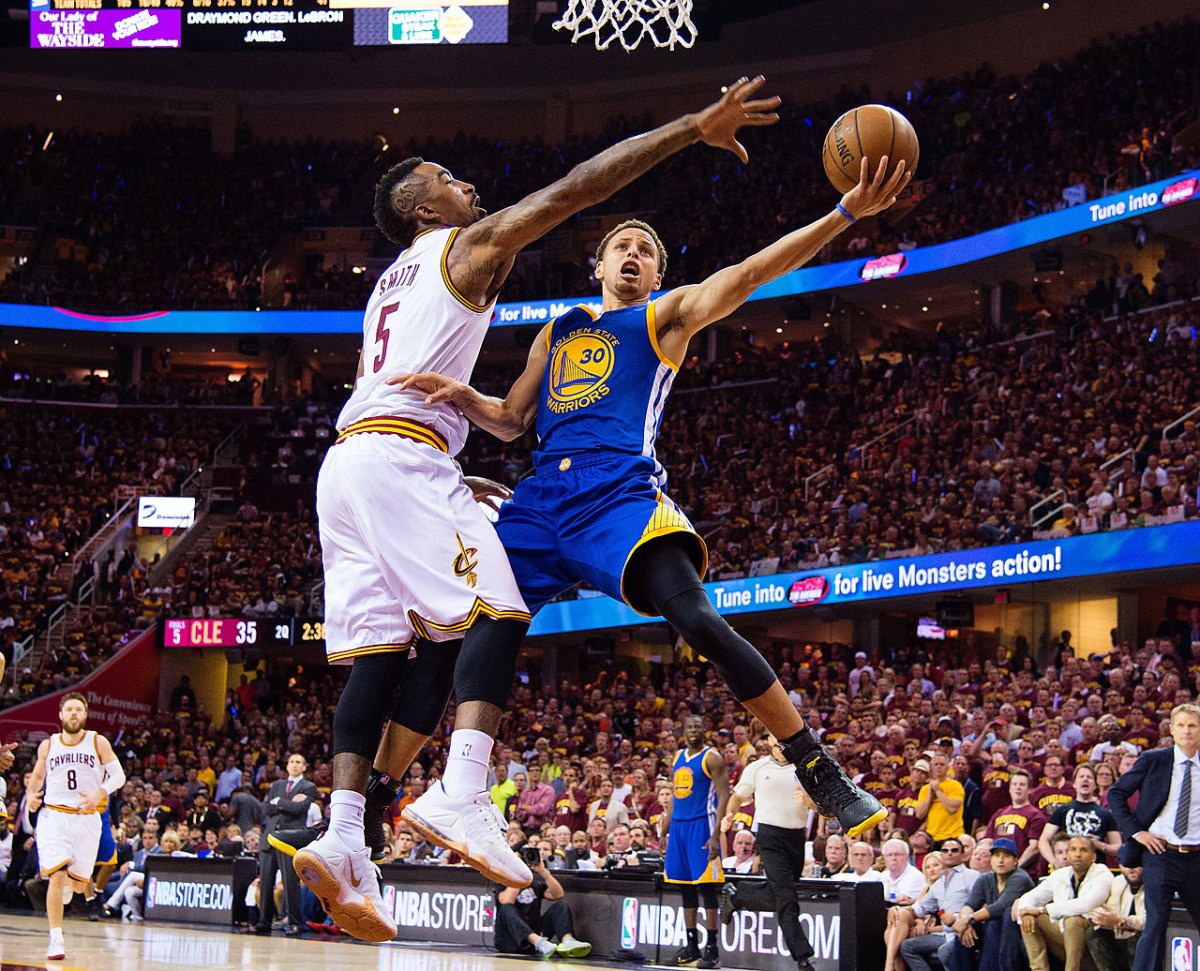
Steph Curry goes to the left hand to score two of his 25 points.

LeBron James had 32 points, 18 rebounds and nine assists in the losing effort.

Klay Thompson scored five points for Golden State before fouling out late in the fourth quarter.

Steph Curry and the Warriors outscored the Cavaliers 28-18 in the third quarter, quieting a rocking Cleveland crowd in the process. (Text credit: AP)

Cleveland outrebounded Golden State 56-39 in Tuesday's game.

Steph Curry made only three of his 11 three-point attempts and hit eight of 19 overall.

Tristan Thompson throws down two of his 15 points.
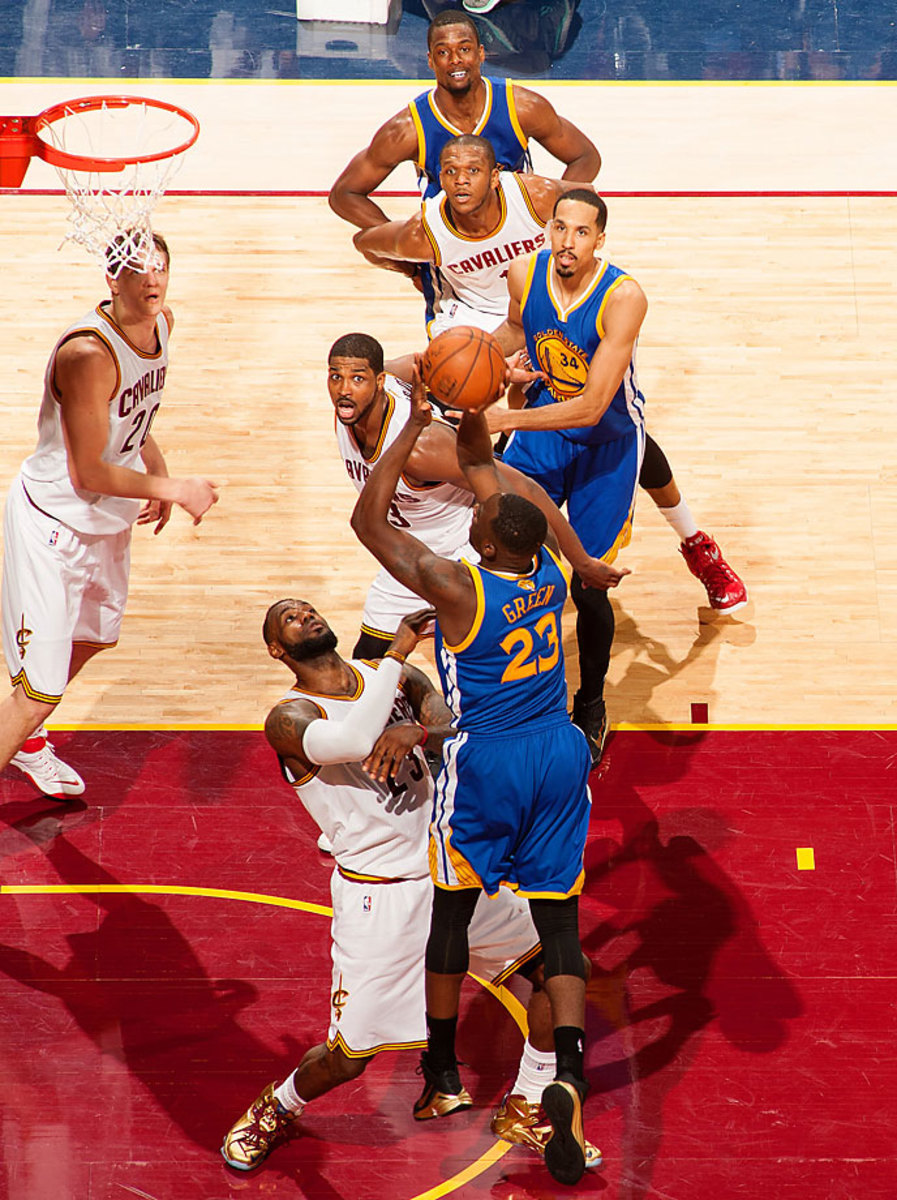
Draymond Green muscles up over LeBron James, who has now lost in four NBA Finals.
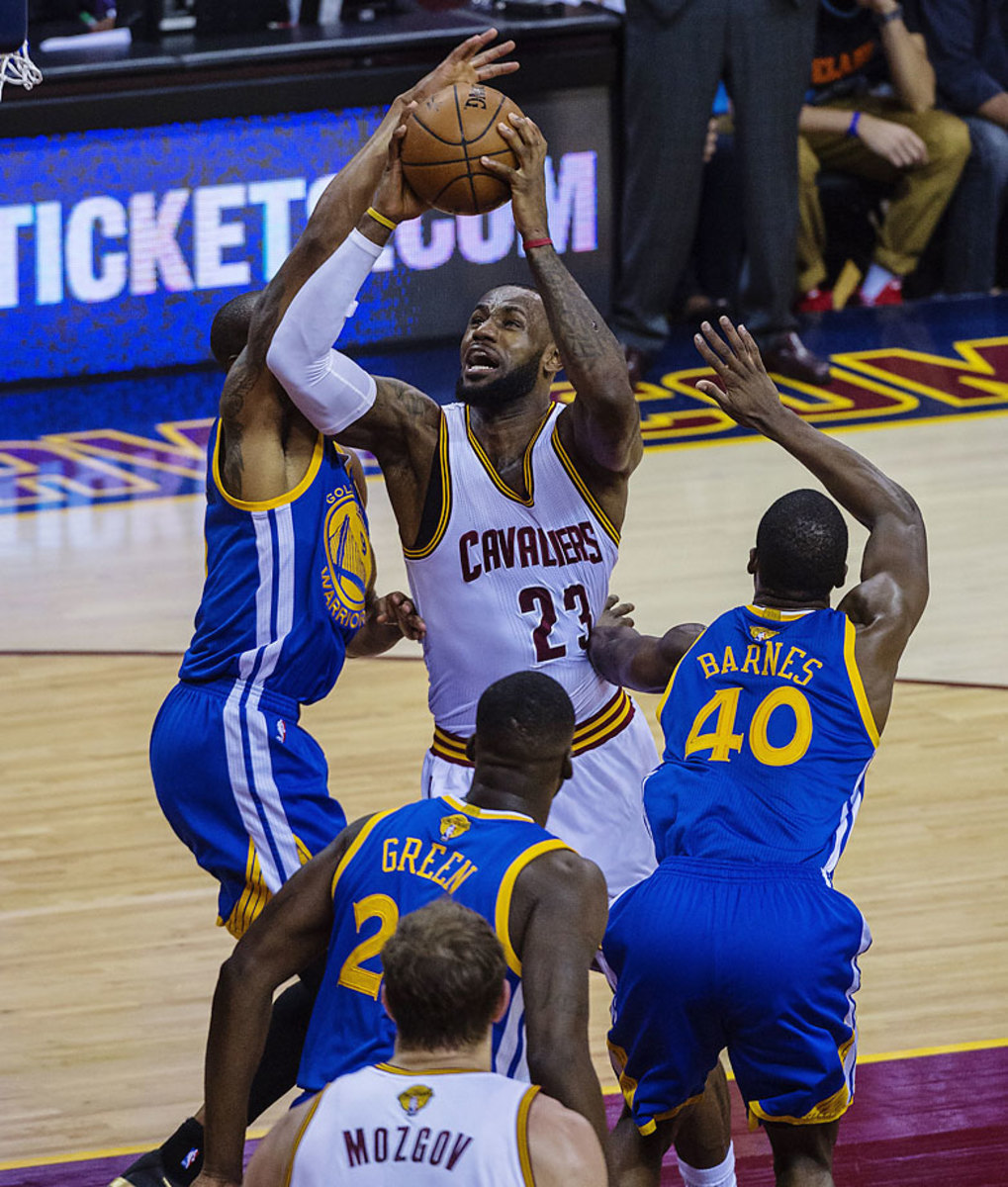
LeBron James returned to Ohio this season to try to end Cleveland's title drought but didn't have a strong enough supporting cast after season-ending injuries to Kyrie Irving and Kevin Love.
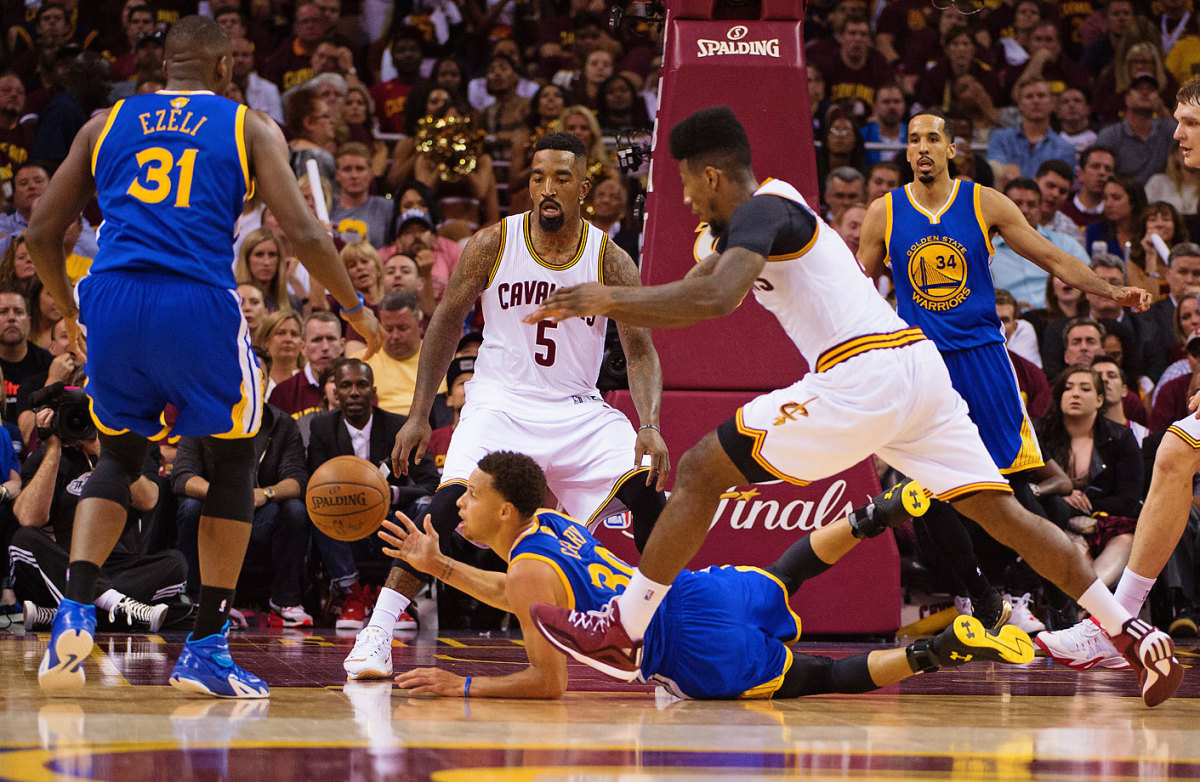
Steph Curry, the Warriors' first MVP since Wilt Chamberlain, hustled from start to finish in Game 6.

